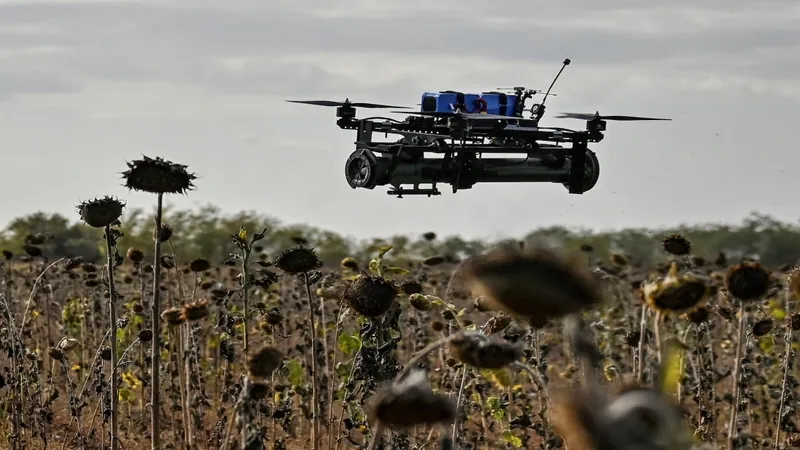
Chinese Scientists Unveil Game-Changing Upgrade for PLA Drones Inspired by Ukraine War
2025-08-04
Author: John Tan
Revolutionizing Drone Technology for Modern Warfare
In the heated battles of the Russia-Ukraine war, drones have emerged as vital assets for reconnaissance and aerial strikes. With Ukrainian air defenses demonstrating astounding effectiveness, only 15% of Russian drones managed to breach their defenses between April and June, marking a significant rise from just 5%. Responding to these evolving conditions, a groundbreaking team of Chinese aerospace engineers has crafted a futuristic upgrade promising to drastically enhance drone survival rates.
A Bold New Approach to Drone Evasion
The innovative concept proposed involves outfitting small to medium-sized drones with compact, side-mounted rocket boosters. This extraordinary design empowers drones to perform rapid, high-G maneuvers—almost like an acrobat in the sky—just moments before missiles strike. Dubbed a "terminal evasion" system, this enhancement allows drones to execute sudden, unpredictable changes in flight paths, leaving even the most advanced missiles struggling to keep up.
Promising Results from Cutting-Edge Simulations
A study recently published in the Chinese defense journal Acta Armamentarii reveals impressive outcomes from rigorous digital simulations. Drones utilizing this new system exhibited an astonishing survival rate of 87%, with many missiles misfiring and detonating harmlessly in empty air.
The Visionaries Behind the Technology
This revolutionary research is spearheaded by Bi Wenhao, an associate researcher at the National Key Laboratory of Aircraft Configuration Design at Northwestern Polytechnical University in Xi'an. Bi emphasized the growing importance of drones in contemporary warfare, noting that their use for reconnaissance and combat has escalated tremendously. Following a detailed analysis of the Ukraine conflict, the team recognized a pressing need for enhanced evasion tactics and survivability of unmanned combat aircraft.
Mastering the Art of Last-Minute Evasion
While typical drones initiate evasive maneuvers well before missile impacts—often forcing them to abandon missions—Bi's team advocates for maximizing effectiveness by acting at the final moment. Their approach hinges on three critical principles: 1. **Precision Timing**: Rocket boosters must ignite within a narrow window of one to two seconds before impact, altering the drone’s trajectory just in time to evade interception. 2. **Directional Intelligence**: The system must discern the best evasive action based on the missile’s approach vector, whether that means climbing, diving, or veering sideways. 3. **High Acceleration**: The boosters need to deliver a staggering 16Gs of acceleration, far surpassing traditional aerodynamic controls—achieving a sudden and disorienting flight path shift.
Challenges Ahead for Integration
Despite this promising vision, integrating these rocket boosters within existing drone frameworks poses substantial engineering challenges. However, the rewards—potentially saving countless drone missions—could redefine aerial combat and elevate Chinese military capabilities to new heights.




 Brasil (PT)
Brasil (PT)
 Canada (EN)
Canada (EN)
 Chile (ES)
Chile (ES)
 Česko (CS)
Česko (CS)
 대한민국 (KO)
대한민국 (KO)
 España (ES)
España (ES)
 France (FR)
France (FR)
 Hong Kong (EN)
Hong Kong (EN)
 Italia (IT)
Italia (IT)
 日本 (JA)
日本 (JA)
 Magyarország (HU)
Magyarország (HU)
 Norge (NO)
Norge (NO)
 Polska (PL)
Polska (PL)
 Schweiz (DE)
Schweiz (DE)
 Singapore (EN)
Singapore (EN)
 Sverige (SV)
Sverige (SV)
 Suomi (FI)
Suomi (FI)
 Türkiye (TR)
Türkiye (TR)
 الإمارات العربية المتحدة (AR)
الإمارات العربية المتحدة (AR)